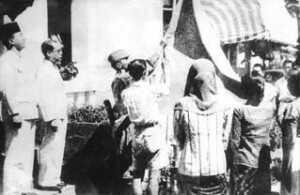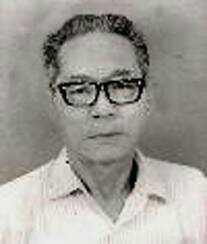
The development of photography in Indonesia has always been related to and flowing with the nation's social-politics momentum, from the momentum of colonial political change, the independence revolution, the economic boom of the early 1980s, to the 1998 Reformation.
In 1841, a Dutch health official named Juriaan Munich received orders from the Colonial Ministry to land in Batavia with a dauguerreotype. Munich was given the task of perpetuating the plants and natural conditions that exist in Indonesia as a way to get information about the natural conditions. Since then, the camera has become part of the modern technology that the Netherlands Government uses to pursue its new policy. The control and control over the colonies is no longer done by building a defensive fortress or the deployment of troops and cannons, but by mastering modern transportation and communications technology. Within this framework, photography performs its functions through colonial administrative workers, court officials, military officers, and missionaries.
This background explains why for 100 years the existence of photography in Indonesia (1841-1941) the mastery of this tool is exclusively in the hands of Europeans, few Chinese, and Japanese. Based on surveys and research results in commercial photography studios in the Indies about photographs from 1850 to 1940, from 540 photo studios in 75 cities and towns, there were 315 European names, 186 Chinese, 45 Japanese , and only four local Indonesians, one of whom is Kasian Cephas.
Kasian Cephas is an indigenous local resident. He was born on February 15, 1844 in Yogyakarta. Cephas is actually an indigenous native who was later appointed as a child by the couple Adrianus Schalk and Eta philipina Kreeft, then schooled to the Netherlands. Cephas was the first to introduce the world of photography to Indonesia. Nevertheless, Indonesian historical literature rarely names her as the first native career as a professional photographer. The name Kassian Cephas began to be tracked with the oldest photographic work made in 1875.
It took almost a hundred years for this nation to really get to know the world of photography. The entry of Japan in 1942 has created an opportunity for the Indonesian nation to absorb this technology. For the sake of its propaganda needs, Japan began training Indonesians to become photographers to work in their news agency, Domei. At that moment came the name Mendur Brothers. They form a new image of the Indonesian nation.
Through photography, the Mendur brothers tried to lead the nation mentally to be mentally high and equal. Frans Mendur with his brother, Alex Mendur, also became an icon for the world of national photographers. They often record important events for this country, one of which is to capture the seconds of reading the Proclamation of Independence of the Republic of Indonesia. This is the momentum when photography really "up" to Indonesia, when the camera changed hands and the Indonesian people began to represent themselves.
Kassian Chepas

Kassian Cephas name is not widely known until the photos of his work on display in the palace starting June 11, 1999 ago in Bale Bang, Sultan's Palace. Maybe even the students who happened to have studied photography in college less familiar with his name. Literaratures of Indonesian history have never mentioned his name as the first native career as a professional photographer, or in the language of Gerrit Knaap (the Dutch historian who composed the book "Cephas, Yogyakarta: photography in the Service of the Sultan") as one of the pioneers modernity. His name is not as fragmented and embedded in the minds of many people such as the name of Wahidin Sudirohusodo or KH. Dewantara who both originated from Yogyakarta and live a time with him.
What is interesting about Cephas's photographs? From the photographs on display at Bale Bang and in Knaap's book it appears that Cephas photographed many things: the sultan and his family, the buildings around the palace, the garebeg ceremonies in the square, the procession of ceremonial objects, the dance- dance, Yogya city scene that era when the highway along Malioboro to the front of Vredeberg Fort is still quiet and filled with large trees on the left-right, the corners of the city that he thought interesting and so forth.
Photography, no difference whatsoever and now, is still considered an expensive activity. Lots of equipment and tools to buy, lots of expenses required. So that people who wrestle the world of photography certainly not a person who carelessly. In the present day people still often look amazed at the photographer who brought a set of tools of various shapes, especially at that time, the period leading up to the end of the 19th century. Photographs of Cephas work depicting the atmosphere of homes and shops on Jalan Ngabean (now JH KH Ahmad Dahlan) is showing the admiration of indigenous peoples to photography. The largest part of the photo frame contains Dutch homes and shops complete with Dutch gentlemen and noni-noni who sit on the porch. While the indigenous people were blurred, standing in the right-hand corner. The road ahead of the house and the shop being photographed seemed empty, as if deliberately emptied for Cephas, the photographer. Somehow they felt that time. May be amazed, astonished, amazed, mixed together.
As the only native of the time who had mastered the photographic equipment, Cephas was certainly a very special person. Imagine a native named Kassian Cephas in the year before the end of the 19th century carrying camera equipment everywhere.
One question that blocked in my head is why the photographs made Cephas always beautiful? The photographs of the dances, the ceremonies, the beautiful models, the architecture of the house of the day, are all pictures of a pleasant atmosphere, nice to see and of course beautiful. An atmosphere that is somewhat contrary to the conditions of Indonesia that has been colonized nearly 300 years. Of course, there's nothing wrong with a photographer taking pictures of the beautiful scenery or the miserable atmosphere he just happens to see. What makes Cephas has a camera perspective about the ever-beautiful world, that's the question.
Cephas was born on January 15, 1845 from the couple Kartodrono and Minah. There is also a saying that he was the adopted son of a Dutchman named Frederik Bernard Fr. Schalk. Cephas spent much of his childhood at the home of Christina Petronella Steven (who). Cephas began studying as a professional photographer in the 1860s. He had an apprenticeship at Isidore van Kinsbergen, a photographer working in Central Java around 1863-1875. But the news of Cephas's death in 1912 mentioned that he studied photography to someone named Simon Willem Camerik.
The wide publication of Cephas photographs began in 1888 when he helped create photographs for the book by Isaac Groneman, a doctor who made many books on Javanese culture, entitled In den Kedaton te Jogjakarta. In another book by Groneman: De Garebeg's te Ngajogjakarta, Cephas photographs are also there.
With his new camera that can be used to create "photographe instanee", Cephas began selling his photographs. Since then his works began to be known and used as a souvenir or gift for the Dutch elite society when they will go out of town or to Europe. For example when JM. Pijnaker Hordijk, leaseholder and prominent freemason, will leave Yogya, he was given a beautiful album containing a compilation of Cephas photographs with a beautiful cover painted by Cephas himself and read "Souvenir von Jogjakarta". Such albums containing photographs of the sultan and his family are also often given as gifts to government officials such as resident and resident assistant. Such circumstances certainly make Cephas widely known to the high class society, and gives him the freedom to mingle in their environment.
😂😂